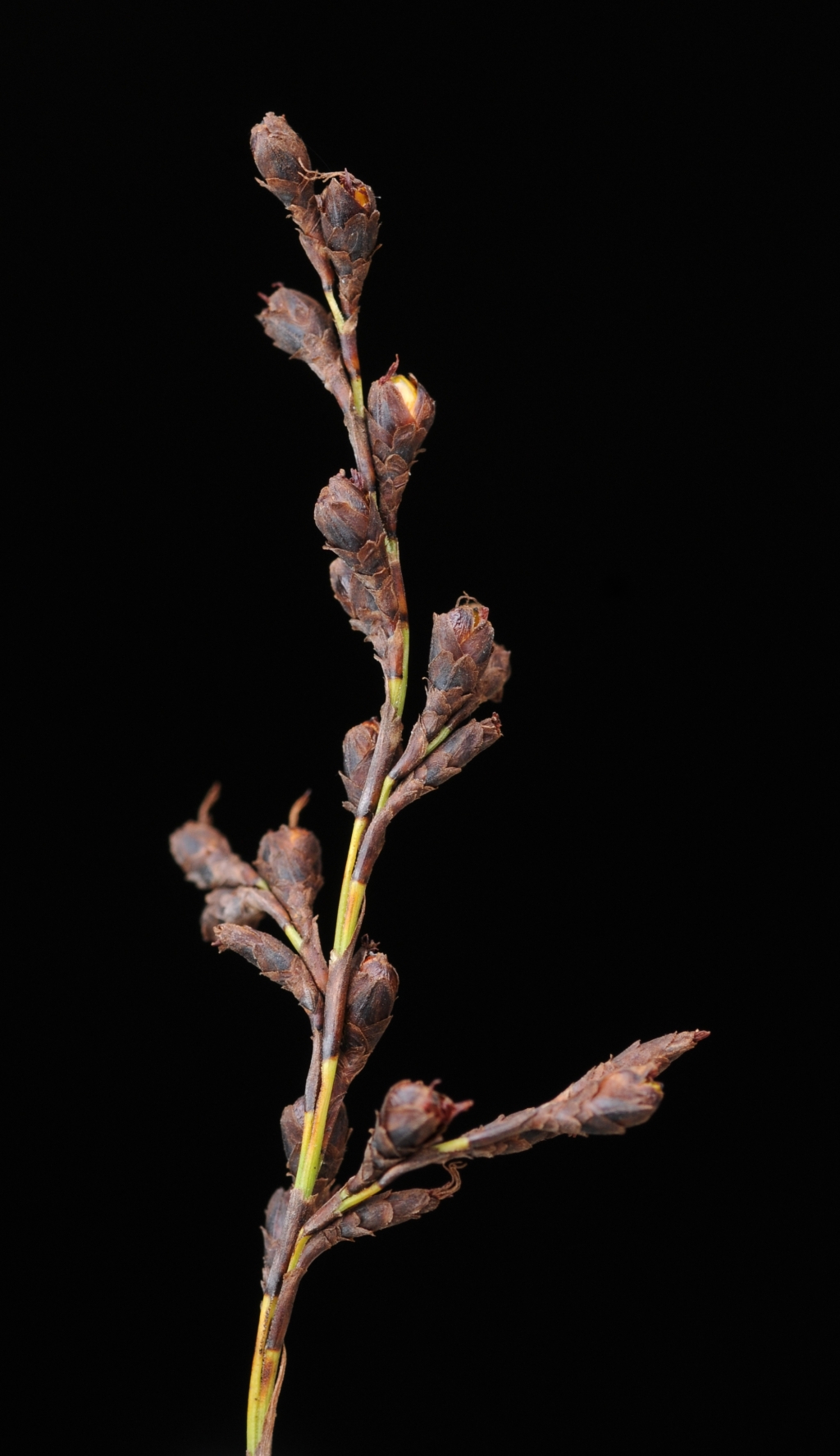Gahnia clarkei
Benl Tall Saw-sedgeTall, tussock-forming perennial, often with sprawling, elongated, cane-like culms to 10 m long. Culms stout, 1–5(–10) m high, 1–12 cm diam. Leaf-blades flat, recurved, scabrous, mostly shorter than culms; ligules narrow, chartaceous; sheaths pinkish to brown, dull or with some shining patches. Inflorescence erect to spreading, with relatively long lax branches, 50–125 cm long, with 10–14 nodes. Spikelets 2-flowered. Glumes 12–17, the lowest 7–10 much shorter than upper and mucronate or split apically, brown to dark grey-brown, glabrous, upper glumes obtuse at apex; stamens 3–6; anthers 1.3–2 mm long excluding apical appendage c. 0.2 mm long. Nut ovoid to ellipsoid or rarely obovoid, obscurely trigonous, smooth, reticulate, shining, 2.5–3.0 mm long, 1.5–1.8 mm diam., orange to red. Flowers spring–summer.
GleP, Brid, VVP, GipP, OtP, WaP, Gold, CVU, DunT, EGL, EGU, WPro, HSF, HNF, OtR, Strz, HFE, VAlp. Also SA, Qld, NSW. Locally common beside water-courses and fringing swamps, tolerating somewhat saline conditions.
Differs from G. grandis, the only other species with numerous short glumes at the base of the spikelet, in habit, nut shape and size, anther length and length of stamen filaments.
Wilson, K.L. (1994). Cyperaceae. In: Walsh, N.G.; Entwisle, T.J., Flora of Victoria Vol. 2, Ferns and Allied Plants, Conifers and Monocotyledons, pp. 238–356. Inkata Press, Melbourne.
 Spinning
Spinning

